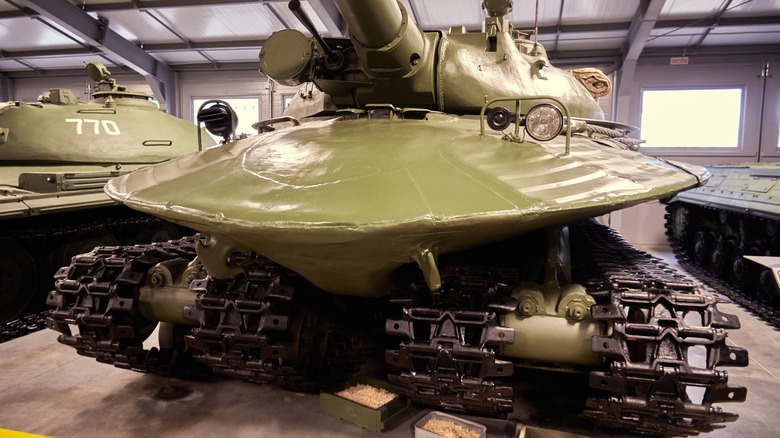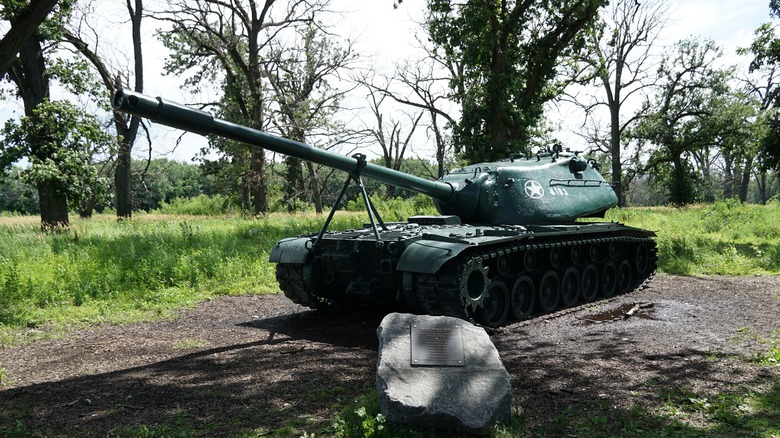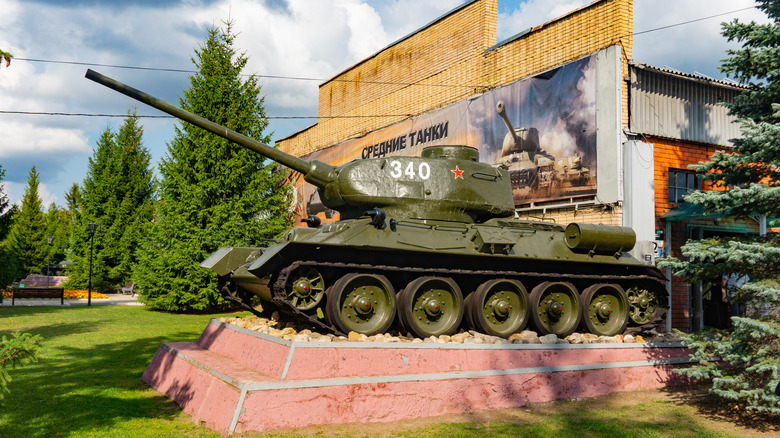Object 279: The Unique Soviet Tank That Was Too Heavy To Build
Given their potency in combat, it's not much of a surprise that famed models such as the Sherman tank had prominent roles to play in the biggest conflict humanity has yet seen: World War II. In the wake of such huge-scale destruction, the Soviet Union experimented with the boundaries of just how large a tank could become and still be useful. The result was the enigmatically-titled Object 279.
Though tanks are known to be powerful and destructive vehicles designed to punch through fortifications, different classifications of tank historically had different roles. In World War II, the Allies' more agile medium tanks (such as the Cromwell that was fielded by the British army in the latter stages of the conflict), while outgunned at times by the formidable heavy tanks of the Wehrmacht, could be created in greater numbers and were easier to maneuver to where they were needed.
The issue facing those who developed any sort of armor-fortified technology in the Cold War era was this: How to protect against the sort of formidable weapons the world now had access to? This enormous tank was one option experimented with by Soviet engineers, and though it was ultimately too heavy to be practically used, it was certainly a formidable prospect. Here's a closer look at the mighty Object 279.
What was Object 279?
Heavy tanks such as the United States' M103 (pictured here), though formidable, could be unwieldy, though they were also awe-inspiring powerhouses that commanded respect. In 1957, the Soviet Union's Leningrad Kirov Plant set about creating perhaps the most intimidating concept for such a vehicle ever devised. Object 279, at around 60 tons in weight, absolutely put the heavy in heavy tank.
With armored plating around 11 inches thick, the concept for Object 279 was seemingly focused on one thing: frontal assaults. It was well-equipped to make them, too, boasting night vision, infrared targeting, a 130mm M-65 and a unique defensive design that would have enabled it to absorb enemy blasts through both armor thickness and its particular shape. The crew inside also had access to defenses against nuclear attack.
Furthermore, its unorthodox arrangement of treads may have helped it overcome that traditional weakness of the typical tank: difficult terrain. Muddy ground can easily render tanks all but useless, trapped in the mire by their treads, but the colossal Object 279 may not have been as vulnerable to this. It was placed on unique beams and, working as two pairs of two, the four treads likely could have kept it from sinking into the ground.
Theoretically, at least, Object 279 had the potential to be one of the most unique and formidable (offensively and defensively) heavy tanks ever fielded. Its only issue was that heavy tanks were coming to the end of their practical lifespan as it was being developed.
What happened to Object 279?
Ultimately, Object 279 did not reach the full production stage, being developed only as a very limited prototype. Its unique nature was part of its undoing. Its strange design made it costly to provide any on-the-fly maintenance that was necessary, and its suite of weaponry, potentially devastating as it was, would have been rendered obsolete by the advance of missile technology.
As per the Allies in World War II, lighter, more maneuverable tanks became the focus of Soviet command, even among those that had been so enamored with the concept of formidable, heavier ones before. As Stephen Sewell put it in Armor magazine in 2002, "by 1965, heavy tanks were recognized as overcome by events." Within two years, heavy tanks had largely been left behind, their armor unable to withstand developments in weapon technology and those same developments meaning that medium tanks were no longer such a compromise in terms of firepower.
Main battle tanks became, and remain, a prominent force, but Object 279 isn't entirely forgotten just yet. In 2022, the International Business Times reported that the remaining prototype of the model had undergone restoration at the Kubinka Tank Museum, and that footage had been released of it tentatively in motion. It's extraordinary to see, though whether this Soviet Union powerhouse is practical enough to perform anything beyond that is a mystery.


